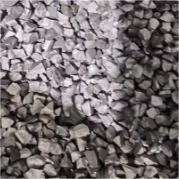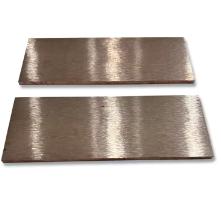**Gilding Your World: Home Gold Plating Made Simple**
(How To Gold Plate Metal At Home)
Ever held a piece of gold-plated jewelry? That warm, luxurious shine feels special. Imagine creating that magic yourself, transforming ordinary metal objects into pieces that gleam. Gold plating at home isn’t wizardry; it’s a fascinating craft anyone can learn. This guide walks you through the essentials, safely and effectively. Let’s unlock the secrets of DIY gold plating.
**1. What Gold Plating Actually Means**
Gold plating involves covering a metal surface with a very thin layer of real gold. Think of it like painting, but instead of pigment, you use actual gold atoms. This layer bonds to the base metal (like copper, brass, or nickel silver) through an electrochemical process called electroplating. The result? The object looks and feels like solid gold, but uses only a tiny, affordable amount of the precious metal. The key is achieving a strong bond and an even coat. It’s science applied to beauty. The thickness of this layer is measured in microns – incredibly thin, yet capable of creating a stunning visual impact. It’s about giving surfaces that unmistakable golden aura without the solid gold price tag.
**2. Why Gold Plate Things at Home?**
The reasons to try home gold plating are compelling. Cost is a big factor. Solid gold items are expensive. Gold plating lets you enjoy the look of gold for a fraction of the cost. Personalization is another major draw. You can transform cherished heirlooms, costume jewelry, or unique finds into gleaming treasures. Repairing worn plating on vintage pieces restores their former glory. Creative freedom is huge. Plate buttons, picture frames, small sculptures, or even tech gadgets. The satisfaction of reviving or customizing something yourself is deeply rewarding. It’s also a practical skill. Understanding the process demystifies how many beautiful objects are finished. Finally, it’s simply fun. Seeing a dull metal object emerge shimmering gold feels like alchemy in your own space.
**3. How to Gold Plate Metal Yourself (Safely)**
Ready to start? Safety first. You absolutely need protective gloves and eye protection. Work in a well-ventilated area, like a garage or outside. Avoid breathing fumes. Here’s the basic process:
* **Clean the Object Thoroughly:** This is critical. Any dirt, grease, or tarnish prevents the gold from sticking. Wash with soap and water. Use a specialized metal degreaser. For stubborn grime, a quick dip in a mild acid bath (like vinegar or citric acid solution) helps, followed by a water rinse. The metal must be spotless and completely dry.
* **Set Up Your Plating Station:** You need a power source (a small DC rectifier or even batteries work for tiny items), plating solution (liquid containing gold ions), an anode (usually a pure gold or platinum-coated rod), and wires with alligator clips. Use a glass or plastic container for the solution. Never use metal containers.
* **Connect the Object:** Attach the negative wire (cathode) clip securely to your clean, dry metal object. Suspend it in the plating solution, ensuring it doesn’t touch the container sides or bottom.
* **Connect the Anode:** Attach the positive wire (anode) clip to your gold rod. Suspend this rod in the solution, opposite your object, also avoiding contact.
* **Apply Power & Plate:** Turn on the power source. Start with a low voltage. You should see tiny bubbles forming on the object. This is hydrogen gas – a sign the reaction is working. The gold ions in the solution are drawn to the negatively charged object and deposit onto its surface. Keep the object moving slightly for an even coat. Plating time varies (seconds to minutes) depending on desired thickness and solution strength. Watch closely!
* **Rinse & Dry:** Once coated, immediately turn off the power. Remove the object and rinse it thoroughly under clean running water. Pat it dry gently with a soft cloth. Avoid rubbing hard.
**4. Gold Plate Applications Beyond Just Jewelry**
While jewelry is a classic use, home gold plating opens a world of creative possibilities. Think about reviving old brass or copper decorative items: picture frames, candlesticks, drawer pulls, or lamp bases. A touch of gold can make them look exquisite. Customize everyday objects: plate the nib of a favorite pen, the rim of glasses, or even keys. Hobbyists use it for model car parts, miniature figures, or antique restoration. It can add a unique flair to musical instrument parts like trumpet mouthpieces or guitar hardware. Even tech gadgets can get a subtle golden highlight on bezels or buttons. The key is starting small with non-critical items. Experiment! See how a thin layer of gold can elevate the ordinary. It’s about adding a personal, luxurious touch to the world around you.
**5. Gold Plating FAQs Answered**
Let’s tackle common questions:
* **Is home gold plating expensive?** Startup costs exist (power supply, solution, anode), but the actual gold used per item is minimal. It’s far cheaper than buying solid gold or professional plating for small jobs. Solutions can be reused many times.
* **How durable is DIY gold plating?** Durability depends on thickness and the base metal. Thin plating on items handled often (like rings) will wear faster. Thicker plating on decorative pieces lasts years. Proper surface prep is crucial for longevity. Avoid harsh chemicals and abrasives.
* **Can I plate any metal?** Copper, brass, bronze, nickel silver, and steel (with a nickel undercoat) plate well. Pure aluminum, stainless steel, and some alloys are tricky and often need special preparation or professional processes.
* **Is it dangerous?** The chemicals involved require respect. Always wear gloves and eye protection. Work in ventilation. Never eat or drink near your plating area. Follow solution safety instructions meticulously. If unsure, don’t proceed.
* **My plating looks patchy or didn’t stick. Why?** Almost always, the cause is inadequate cleaning. Grease or oxidation is invisible to the eye but blocks plating. Double and triple-check your cleaning steps. Ensure good electrical contact with the clip. Solution might be old or contaminated.
* **How thick should the gold layer be?** For decorative items, a very thin layer (0.1 – 0.5 microns) is often sufficient. For rings or items expecting wear, aim for thicker plating (1-5 microns), which requires more time and solution. Jewelry plating kits often specify thickness.
(How To Gold Plate Metal At Home)
* **Are there safer alternatives?** Gold leaf (applying thin sheets of gold with adhesive) avoids chemicals but is a different skill and look. “Gold” spray paints offer a quick cosmetic solution but lack the authenticity and durability of real electroplated gold.
Inquiry us
if you want to want to know more, please feel free to contact us.


